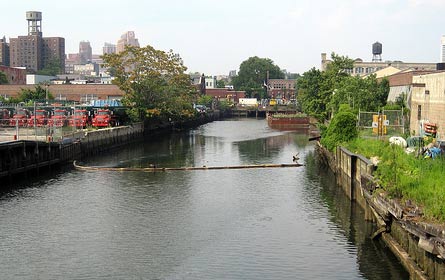Eight Candidates Run in a District Marked by Change
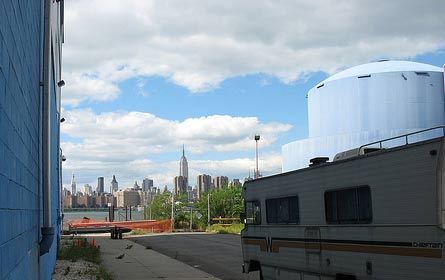

If any single City Council district epitomizes the changes in New York over the last 10 years and the uncertainty of the economic future, it is District 33. Sweeping along the waterfront from Greenpoint to Carroll Gardens, and including northern Park Slope, District 33 has more than 65 percent white residents, the most affluent population in Brooklyn and one of the densest sets of active Democratic voters in the country. But it also includes some of the poorest residents.
Not surprisingly housing and development dominate debate in the crowded race to replace David Yassky, who is running for comptroller. Seven candidates are vying in the Democratic primary on Sept. 15, which will likely decide the winner of the Nov. 3 election. An eighth contender, Elizabeth Tretter, is waging a quiet campaign solely on the Conservative ticket. She has not appeared in any of the major debates hosted this summer.
The Democrats are a diverse crew, ranging from a recent college graduate backed by a party boss to a Lexus driving Hasidic Jew who dislikes bike lanes. Most observers view Jo Anne Simon, Stephen Levin and Evan Thies as the front-runners.

Simon, 56, a disability rights attorney, holds the post female Democratic district leader, an influential political stepping-stone. Her experience as a community leader converts into a solid voter following in the southern end of District 33, which is divided geographically by the Brooklyn Navy Yard. Thies, 29, is Yassky's former chief of staff and a public policy consultant.
Levin, is the recent college graduate backed by his former employer, State Assemblymember and machine party boss Vito Lopez. Levin, who often invokes Lopez's name, has picked up a list of high profile endorsements, including support from Sen. Charles Schumer and Rep. Carolyn Maloney.
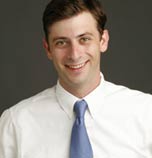
Making the race tighter, the four other Democratic candidates aggressively frame important issues that the other candidates overlook. Kenneth Diamondstone, 60, the only openly gay candidate, campaigns on his record as a community advocate and affordable housing developer. Doug Biviano, 40, is an engineer and Brooklyn Heights building super and the newest face to politics. Isaac Abraham, 59, a hardware store owner and tenants' rights advocate, is the district's only Hasidic Jewish candidate. He has called for replacing bike lanes with parking spaces on the major bike commuter thoroughfare, Kent Avenue, and recently announced a plan to cut $1.2 billion from the city budget, the specifics of which he will unveil soon.
Ken Baer, an accountant, speaks mostly on environmental and quality of life issues, gained from his experience as the head of the local Sierra Club. Unintentionally entertaining audiences in debates, he often runs over time limits or misses his cue to speak.
A District Rezoned
The campaign is being waged in a district shaped by 14 rezonings since 2001. This is the highest concentration of rezonings to affect any council district, and they have quickly altered its physical and social landscape.
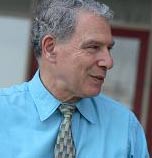
All seven Democratic candidates call for increased funding for community-based plans, also known as 197a plans, which the City Charter allows to accompany all rezonings. Simon, Abraham, Diamondstone and Thies all showcase their experience with these plans when discussing development in the district.
Simon advocated for open space and affordable housing in the Park Slope and Downtown Brooklyn rezonings, and lobbied against the Atlantic Yards project as chair and cofounder of the Boerum Hill Association. Building on what he learned in the 2005 rezoning of Greenpoint and Williamsburg, approved when he worked for Yassky, Thies campaigns for his “360 Degree Planning” proposal, which changes the city's land use review process to require input from major city agencies on how development might affect the whole array of municipal services. "We need to have all agencies weigh in on what we are planning for -- education, police, fire," he said.
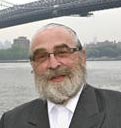
Diamondstone also targets the limits of the current planning process. "The role of city planning has been to make way for luxury housing -- and we don’t need more luxury housing," he said. "There has been no planning -- for schools, parks and infrastructure." He sees the Department of City Planning as "a real enemy of the people." Diamondstone is concerned that large developers too often outweigh the community when large-scale zoning changes take place.
Abraham, who helped develop the mixed income Schaefer Landing apartments on Williamsburg's waterfront, stresses the need for more affordable housing. Although he sports Dolce and Gabana glasses and glides down Kent Avenue in a Lexus SUV, Abraham is a well-versed tenant advocate in Williamsburg.
After the Boom
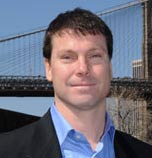
Of course the spate of luxury housing construction in the area may be over -- at least for now. Vacant, stalled, devalued or foreclosed luxury real estate now spots District 33 neighborhoods like the plague. Diamondstone, Biviano, Simon and Thies want the city to buy vacant or stalled new developments, and auction them off at more affordable rates.
Diamondstone, a lead developer on the affordable Schermerhorn House, argues that the city should offer tax abatements under the 421A program to developers anywhere in the city who designate 30 percent of all new homes as affordable -- 10 percent above the current level required.
Levin ran a tenant relocation program for Vito Lopez's Ridgewood Bushwick Senior Citizens Council that assisted residents while lead paint was removed from their apartments. Now, seemingly oblivious to the housing crash, he maintained that real estate prices in Brooklyn are still "still hot." He wants the government to require affordable housing, especially senior housing.
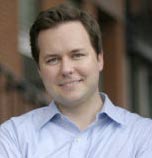
With the economy in recession, Thies seeks to bring city-run incubators to aid freelance businesses into the district. In 2007, Thies helped repeal the Unincorporated Business Tax, a double tax held over freelancers making less than $100,000. He now favors repealing it for people making less than $150,000. On these issues, Thies has worked with the Freelancers Union, which has endorsed his candidacy.
Campaign Cash
The winner from Democratic Primary on Sept. 15 will likely win the council seat. Whatever Democrats emerges from that contest will then face Levin who can run on the Working Families ticket, regardless of how he fares in the Democratic primary, and Tretter on the Conservative ticket in November.
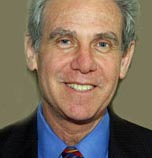
In a Democratic Primary where 70,329 possible voters will have so many choices, the winner may result from a margin of fewer than 1,000 votes. So every campaign donation hints at that margin. As of this date, Simon has amassed the largest purse, at $103,383. Levin has raised a close second with, $90,738. Thies has brought in $64,399. Diamondstone totaled $51,424 with Abraham at $45,466. Baer has raised only $23,511 and Biviano has collected $20,830. Tretter is not listed with the New York City Campaign Finance Board.
This article was written under a partnership between Gotham Gazette and the Baruch College's Department of Journalism and Writing Professions.When first published, this story said candidate Isaac Abraham was 65 years old. He is in fact 59 years old. The story has been updated to reflect the correction.
Gowanus Canal Looms over District 39 Race

The swath of brownstone Brooklyn that makes up City Council District 39 includes some of the city's most gentrified neighborhoods. But much of the debate in the race to succeed City Councilmember Bill de Blasio revolves around what to do about a remnant of the area's far grittier past -- the notoriously noxious and toxic Gowanus Canal.
Five Democrats are vying for the party's nomination to replace de Blasio, who is vacating his seat to run for public advocate. Leading the pack in contributions and endorsements are Brad Lander, the director of the Pratt Center for Community Development; Josh Skaller, a leader of grassroots political and neighborhood organizations; and Bob Zuckerman, who runs environmental nonprofits. Rounding out the Democratic field are John Heyer, a licensed funeral director and special assistant to Brooklyn Borough President Marty Markowitz, and Gary Reilly, an attorney with a background in environmental and land use law.

Although the district is overwhelmingly Democratic, it features that rarest of all elections in New York City politics: a Republican primary. George Smith has the Conservative and Republican Party endorsements, but faces a challenge for the GOP line from corporate strategist Joe Nardiello, who likens himself to Teddy Roosevelt. David Pechefsky, the Green Party candidate, wants to break what he calls the Democrats' monopoly on power in the general election on Nov. 3. Libertarian Roger Sarrabo is also running.
The Big Issue
With so many candidates divvying up the electorate, the election could come down to a very few votes. On street corners, subway platforms and even in doorways, political hopefuls are scrapping for votes one handshake at a time. And one issue they hear about again and again is the Gowanus Canal.

The Gowanus is a finger of pollution that pokes 1.8 miles through Park Slope and Carroll Gardens. More than a century of industrial dumping and combined sewer overflow has left the area filthy. Mayor Michael Bloomberg and the federal Environmental Protection Agency have opposing plans on how to go about a cleanup process that will take at least a decade to complete.
Bloomberg calls for spending $175 million in public funding largely to deal with the raw sewage that runs into the canal. But it remains unclear where the city would find an additional $200 million or more needed to clean up other contaminants.
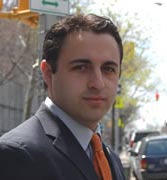
For its part, the Environmental Protection Agency's plan would designate the canal a Superfund site. That would require that private companies responsible for the pollution ante up for the cleanup. Critics of this solution say possible litigation could drag the cleanup process out for years.
While the Bloomberg administration opposes the Superfund idea, the Democratic candidates and Pechefsky generally agree that due to the expense and complex nature of the cleanup, only the Environmental Protection Agency has the expertise and authority to see the project through.
Bloomberg's most vocal critic on this issue is Skaller, who said, "I'm not sure what the mayor's plan is from week to week."
Reilly, Lander, and Heyer all express concerns that neither the mayor's plan nor the federal government's addresses the antiquated infrastructure that allows for combined sewer overflow, which means storm water and raw sewage enter the canal via the same drainage system after even moderate rains. Heyer does not believe the Environmental Protection Agency and mayor's plan are exclusive, and no matter which option is chosen, he wants the city to continue its plans to improve water circulation in the canal.
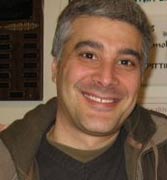
Smith worries that the mayor's plan relies too heavily on corporate money, even though the city calls for responsible corporations to pay for 35 percent of the cleanup, and Superfund designation calls for them to pay 100 percent. Nardiello is unimpressed by either solution because neither, he said, has a timeline or a strategy for addressing property values and air quality during cleanup.
As for what would follow any cleanup, most candidates envision a mix of business, industrial and residential use that conforms to the feel of the neighborhood and provides some public access to the waterfront. Smith, the owner of a party supply rental shop, proposes mostly affordable housing. As a small business owner, he believes too many new stores along the canal could hurt businesses that already exist on Court Street. Skaller, the former associate director of computer music at Harvard, mentions the possibility of an artist community.
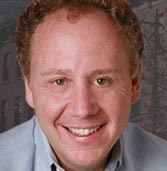
Zuckerman, who is on leave from his position as director of the Gowanus Canal Community Development Corp. to campaign full time, pulls from his experience as director of the Gowanus Canal Conservancy when he suggests creating so-called "sponge parks" that would work as natural water filters. He also proposes establishing a green district in partnership with the nearby Polytechnic University that would feature alternative energy business, environmentally friendly construction and the like.
A Tough Battle
With eight men -- yes, all men -- competing for what amounted to 21,000 votes in 2005, candidates are pulling out all the stops as the primary nears.
Smith filed a suit challenging the validity of petition signatures of his Republican opponent, Nardiello, and Nardiello filed his own suit questioning Smith's residency in the district. The suits amounted to much ado about nothing, and both candidates are still in the race.
On the Democratic side, Lander is touting his status as the one candidate with children in public school, while noting Skaller's son attends private school. Skaller says the decision to send his son to private school is based on the child's special needs. Lander and Skaller have each charged the other with campaign finance irregularities.
On the endorsement front, Lander has the backing of U.S. Rep. Jerrold Nadler and of the Working Families Party, while State Assemblymember James Brennan supports Skaller. Heyer, the youngest candidate in the race, has secured the endorsements of State Assemblymember Joan Millman and the International Longshoremen's Association. Zuckerman won a late endorsement from Rep. Anthony Weiner. Gary Reilly has the personal endorsement of Maria Pagano, president of the Carroll Gardens Neighborhood Association.
In the race for funds, Lander and Skaller lead the way at $116,621 and $101,508 respectively. Zuckerman has reported $89,624 in contributions, while Heyer claims $64,825. Next is Reilly with $27,265 followed by Pechefsky with $14,129. Smith has tallied $2,265, and as of the last reporting date on Aug. 14, Nardiello showed no contributions.
Areas of Agreement
The intensity of the campaign might conceal the fact that on many issues most of the candidates agree. For example, on mayoral control of city schools, the candidates generally concur that anything is better than the old Board of Education, but they all are concerned with what they see as a lack of parent input in the current system. Only Nardiello approves of the current structure of the Department of Education.
The remaining seven candidates want to establish checks and balances, such as City Council approval of the chancellor, council appointments to the citywide Educational Policy Panel, fixed terms for board members and budgetary oversight. The most caustic words come from Reilly, who charges that school governance under Bloomberg has been "arbitrary" and "capricious."
Zuckerman said that whoever is chancellor should have an educational background, unlike current Schools Chancellor Joel Klein, who made his career in antitrust law.
All eight candidates decry the City Council's voting to extend the mayor's and their own term limits, overturning voters in two separate referendums. Only Nardiello believes, because of the recession, Bloomberg should run again. Pechefsky, Zuckerman, Heyer, Lander, Reilly and Skaller support a binding referendum on term limits.
All the candidates share the basic idea that any rezoning in the area should fit within the character of the community.
Everyone supports more affordable housing, although they differ on how to accomplish that. Nardiello wants to use eminent domain to seize stalled developments and focus on housing for seniors. Pechefsky calls for housing that would promote integration among income groups. Reilly wants stronger rent regulation. Heyer believes preference should be given to middle-income homebuyers and those already in the community, while Lander wants to give breaks to police officers, teachers and first-time homebuyers. Citing his history as director of both the Pratt Center for Community Development and the Fifth Avenue Committee, Lander also wants tax breaks and other incentives taken from builders who are sitting on stalled projects.
Zuckerman proposes the creation of community land trusts in which a non-profit organization would own a large piece of land and private residents would have individual homes on it. He also thinks developers should set aside 20 percent of homes in new developments for affordable housing. But Skaller, a volunteer organizer with Develop Don't Destroy Brooklyn is skeptical. "The City Council is bought and paid for by developers," and so, he said, with 80 percent of apartments being sold as luxury units, the median price for all homes rise.
This article was written under a partnership between Gotham Gazette and the Baruch College's Department of Journalism and Writing Professions.
Waiting to Wade
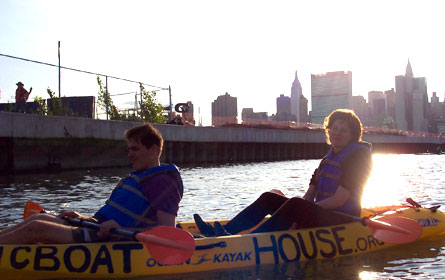
This story was done through a partnership between The Huffington Post's Eyes and Ears citizen journalism program and Gotham Gazette. Gotham Gazette reporter Courtney Gross wrote the piece using stories from New Yorkers gathered through The Huffington Post and Gotham Gazette. Sign up here to join Huffington Post's citizen journalism team covering New York to be part of more of these stories.
These were rough waters.
A group of 15 New Yorkers, including this reporter, set out on the East River Friday evening for a taste of the city’s sea salt. Two to a kayak, they trolled our marine superhighway, from the shores of Long Island City to the meandering, if slightly noxious, Newtown Creek, weaving between the city’s water taxis and bobbing in their wakes.
An activity once reserved for long weekends in the Catskills is now embarked upon here in the five boroughs –- life jackets included -– thanks to groups of aqua-friendly volunteers.
“I’m sorry I didn’t start coming out sooner,” said Ted Gruber, the de facto captain of one such group: the Long Island City Community Boathouse, which runs free kayaking programs every weekend. Gruber, a Greenpoint resident, has been paddling throughout the city’s tributaries and rivers for three years.
“Twenty years ago,” he added while pedaling his blue, foot-powered kayak in Newtown Creek, “it was unthinkable.”
Gotham Gazette on the Waterfront
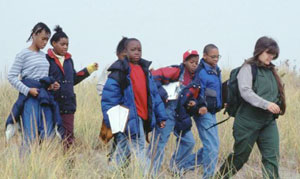
.........................
National Parkland Not on Radar
Our parks columnist explores the national parkland along the New York Harbor -- an area most New Yorkers have never heard of.
.........................
The city has created a new plan for the ball fields on Randall's Island. Critics, though, are calling foul.
.........................
After three tries, a new Mass Transit Tunnel linking New Jersey and New York has broken ground. But advocates question whether this proposal will really ease traffic under the Hudson.
.........................
As planners and developers eye the water's edge, are grassroots and community advocates losing their say?
A lot of New Yorkers and many of you who responded to Gotham Gazette and Huffington Post’s inquiry on waterfront access say they also get their waterfront fix via vessel -- kayaking in Long Island City's Hallets Cove or paddle-boating under the Brooklyn Bridge.
Still, no one is ready to call the East River the new Grand Canal.
The Bloomberg administration’s pursuit of development along the city’s shorelines has brought a renewed focus to the waterfront. From preserving the working waterfront of Sunset Park to the construction of waterside parks in western Queens, points of access to the city’s 578 miles of water’s edge are popping up across the five boroughs. Though it may still be a long way from bringing the waterfront to every New Yorker, advocates say the city is no longer swimming upstream.
To tell us about your own waterfront activities or complaints, check out this map here.
Dipping a Toe In
Megan Browne, who lives in Dumbo at the mouth of the Brooklyn Bridge, takes her 5-year-old twins down to the water almost every day.
Browne, a 43-year-old California native who spent 16 years living abroad in Europe, said living by the waterfront is ideal -- even if New York’s waterfront recreational opportunities pale in comparison to other locations.
"In most European cities, I think they take much better advantage of the waterfront than New York does," said Browne. "It's always been a mystery to us."
But just 10 years ago, according to city officials and advocates, it was far worse. Up until the late 1980s, according to Department of Environmental Protection Deputy Commissioner for Wastewater Treatment Vincent Sapienza, more than 200 million gallons of sewage were discharged into the city's waterways every day -- a major impediment to waterfront recreation and development.
"Obviously, that made things pretty miserable," said Sapienza.
With the addition of new sewage treatment plants, Sapienza said the city is now capturing almost all of the city's wastewater during dry weather (during storms, it’s another story). The progress has allowed the state to designate almost all of the city’s waterways, including the East River, as boat and recreation friendly. The lower New York Bay, which includes the beaches of Staten Island and Coney Island, as well as parts of the Hudson River, from the Bronx to Westchester County, are deemed swimmable by the State Department of Environmental Conservation.
And as the water gets cleaner, more people are likely to jump in -- or at least paddle through, say advocates. President of the Metropolitan Waterfront Alliance Roland Lewis points out that a decade ago there were only two paddling organizations in the metropolitan area. Now there are 22, one of them being Gruber’s Long Island City-based kayakers.
As the East River lapped against the side of their yellow boats and salty water dripped from the tops of their paddles, the kayakers floated near Roosevelt Island, many wet from the waist down. Leslie McBeth, a Greenpoint resident that was joining for the first time, noted that the city’s newfound waterfront focus is even more evident from the water level. A shoreline once covered only with warehouses facing inland now has piers and large condominiums looking out on the water.
“It was kind of fun to see the city from a different perspective,” said McBeth. “There is so much water in New York… now people are facing it.”
The city, advocates say, is doing its part to encourage that. Last spring, the parks department launched the city’s first water trail –- a pathway made especially for kayaks, canoes and other marine recreation – connecting more than 160 miles of tributaries, creeks, rivers and bays.
Also within the past year, the City Council passed legislation requiring the city draft a waterfront plan every decade (the first is due out in December 2010); the city Planning Department revised its waterfront zoning rules, which it says will encourage more waterfront development and access; and the Bloomberg administration announced the expansion of ferry and water taxi terminals.
Much of this attention may be due to massive luxury residential development along the water. But whatever the impetus, advocates are cheering.
"I give them a very solid thumbs up on turning the corner," said Lewis. But, he added, "there is a long, long way to go."
Finding Your Way to the Edge
Gruber pedaled his way along Newtown Creek –- one of the city’s most polluted waterways –- as a putrid stench wafted overhead and beer cans floated by.
Lucky for this group, the rain had held off for a couple days. It could have been a much smellier story.
Thanks to the city’s combined sewer system, more than a tenth of an inch of rain can send millions of gallons of raw sewage spilling into our waterways. To avoid this, Sapienza said, the city is implementing a wide range of green (and clean) technologies, like porous pavement and green roofs that would trap the city’s stormwater or divert it from the system entirely. Two retention basins are already in use, holding millions of gallons of stormwater until it can gradually be released into the treatment system. Two more, one in Queens the other in Brooklyn, are scheduled to be in use next year.
The Department of Environmental Protection also sends boats out weekly during the warmer, recreation-friendly months to test contaminants in the water. (The boats go out monthly during the winter.) But unlike the city’s beaches, which have the health department sampling and notifying swimmers of water quality conditions , the city’s rivers and tributaries have no public notification system, and the health department does not sample them.
These conditions, says Lewis, prevent New Yorkers from utilizing the city’s waterways to their full potential.
“The limiting factor for a lot of recreation and enjoyment of the waterfront is the CSO [combined sewer overflow] issue,” said Lewis. “In this summer of rain it’s been particularly awful.”
Additionally, Lewis said, the less affluent areas of the five boroughs have a waterfront access drought. As an example, he noted that from Riverdale to the Bronx River, there is no launching point for the public to get onto the water.
Advocates want that to change. The more people use the waterway, said Lewis, the more the city will be required to accommodate them.
Back on the East River, the kayakers’ volunteer leader for the evening, Monica Schroeder, radioed to local marine traffic that the group would be paddling across the marine channel. A tugboat called back: “I’m eating kayakers tonight for dinner.”
Undeterred, the kayakers paddled on, claiming the East River for themselves.
